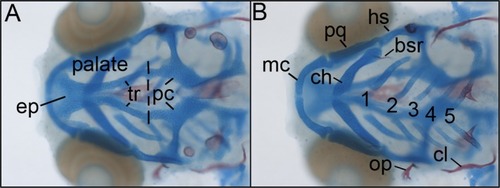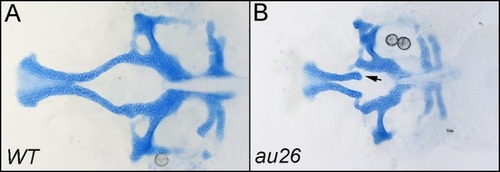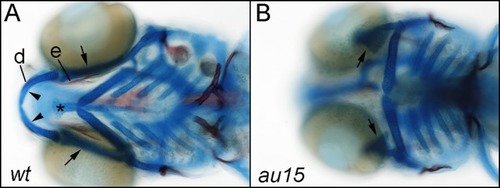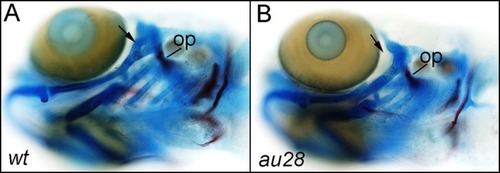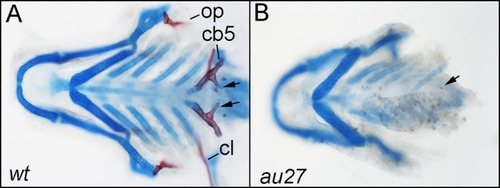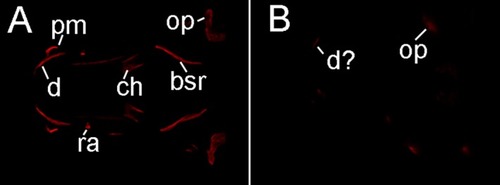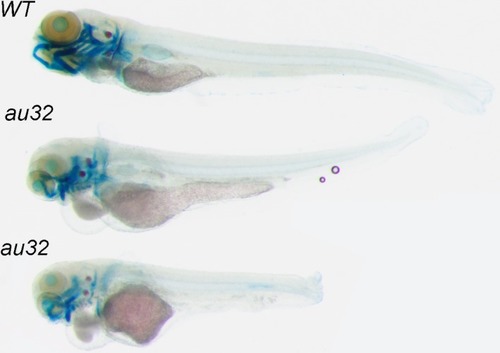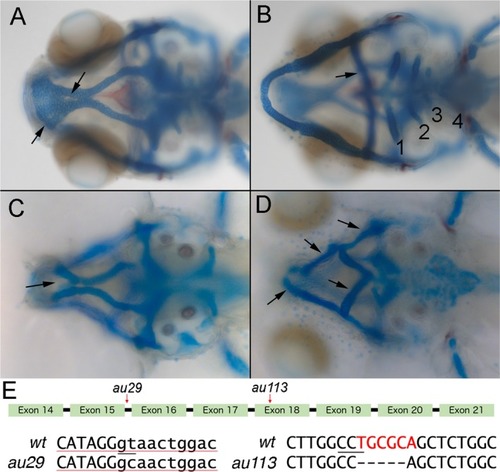- Title
-
Novel ethanol-sensitive mutants identified in an F3 forward genetic screen
- Authors
- Swartz, M.E., Lovely, C.B., McCarthy, N., Kuka, T., Eberhart, J.K.
- Source
- Full text @ Alcoholism Clin. Exp. Res.
|
Wild‐type zebrafish craniofacial anatomy. Dorsal ( |
|
The PHENOTYPE:
|
|
Lower jaw defects in PHENOTYPE:
|
|
Hyomandibular defects in EtOH‐treated PHENOTYPE:
|
|
Bone loss in EtOH‐treated PHENOTYPE:
|
|
Bone loss in PHENOTYPE:
|
|
Phenotypic classes of PHENOTYPE:
|
|
Whole body defects in PHENOTYPE:
|
|
Craniofacial defects in PHENOTYPE:
|

Unillustrated author statements |

